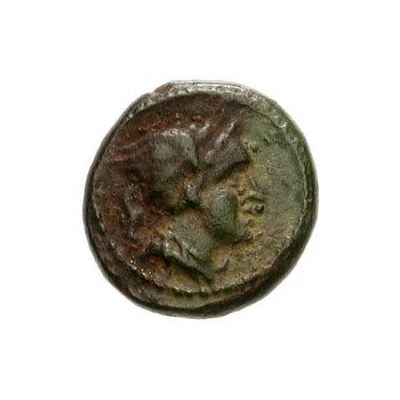


© Classical Numismatic Group, Inc.
Semuncia 193 BC - 150 BC
| Bronze | 1.56 g | 9 mm |
| Issuer | Vibo Valentia (Bruttium) |
|---|---|
| Type | Standard circulation coin |
| Years | 193 BC - 150 BC |
| Value | Semuncia (1⁄24) |
| Currency | As |
| Composition | Bronze |
| Weight | 1.56 g |
| Diameter | 9 mm |
| Shape | Round (irregular) |
| Technique | Hammered |
| Orientation | Variable alignment ↺ |
| Demonetized | Yes |
| Updated | 2024-10-09 |
| Numista | N#429992 |
|---|---|
| Rarity index | 100% |
Reverse
Caduceus, sometimes symbol (star, dolphin, Nike, bull, wreath, carnyx, crescent, lyre, tripod, fly, shell, crayfish etc) in field.
Script: Latin
Lettering: VALENTIA
Comment
SNG ANS -; SNG Morcom -.
Interesting fact
The Semuncia coin was used as a form of currency in ancient Rome and was equivalent to one-fourth of a Roman denarius. It was first introduced during the Roman Republic and was used until the reign of Emperor Claudius. The coin was made of bronze and had a distinctive design, featuring the image of a bust of a Roman goddess on one side and a mythological creature on the other. The Semuncia coin was an important part of everyday transactions in ancient Rome and was used to purchase goods and services.